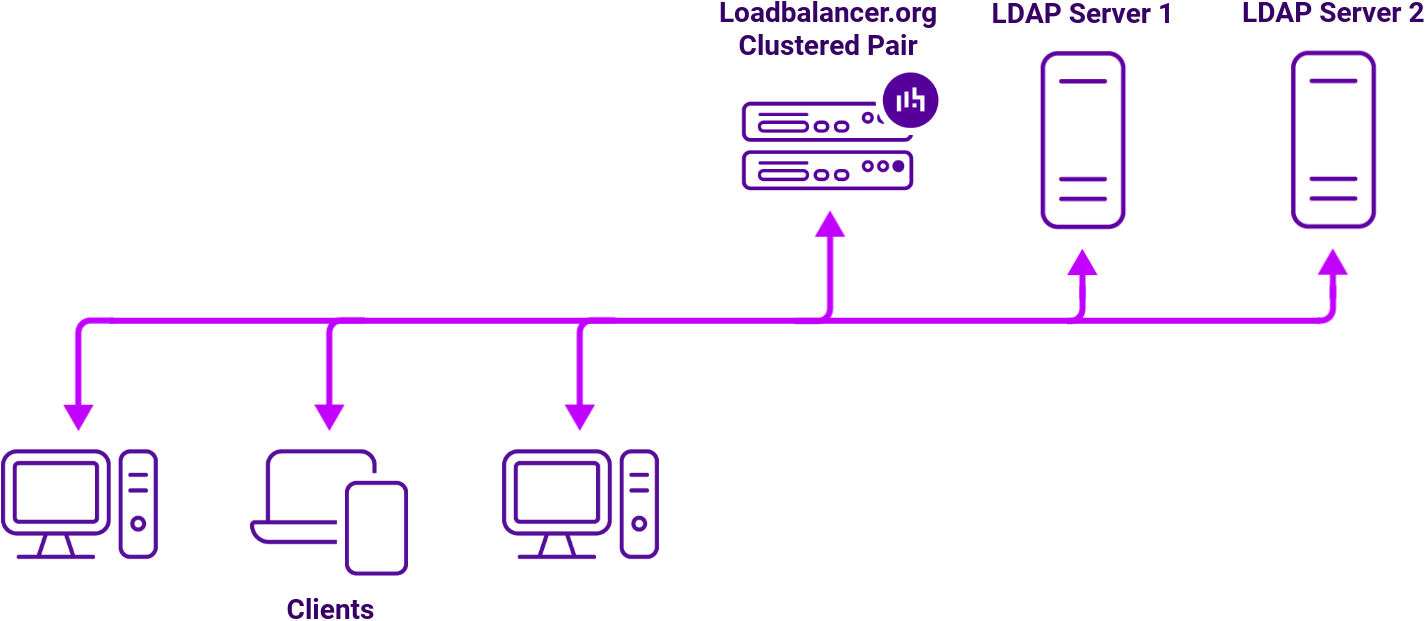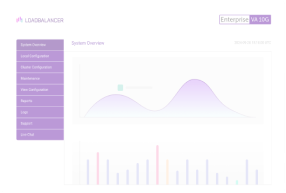Benefits of load balancing LDAP Servers
Load balancing Lightweight Directory Access Protocol (LDAP) provides the benefits of High Availability, improved performance and scalability:
- High availability (HA): Load balancing prevents the LDAP service from becoming a single point of failure. By distributing client requests across multiple LDAP servers, if one server fails (due to hardware issues, maintenance, or software problems), the load balancer automatically redirects traffic to the remaining healthy servers. This automatic failover process ensures that applications and users relying on the directory service maintain uninterrupted access to authentication and authorization services, which is critical for business continuity. It also allows administrators to take individual LDAP servers offline for maintenance, upgrades, or patching without impacting service availability.
- Optimal performance: Load balancing ensures efficient utilization of the LDAP server resources available. It distributes the load (like searches, binds, and updates) across the available server pool, preventing any single server from becoming a bottleneck and ensuring faster response times for client requests. Load balancing algorithms (e.g., Least Connections) can intelligently direct traffic to the server that is currently least busy, optimizing the use of all resources.
- Scalability: When demand increases, it’s possible to easily add new LDAP servers to the pool. The load balancer automatically incorporates them and starts distributing traffic, allowing the service to scale horizontally to handle increased user and application traffic.
About LDAP
LDAP (Lightweight Directory Access Protocol) is an open, cross-platform application protocol. It is designed to allow information to be shared regarding hosts, users, DNS, certificates, printers, and more in a network. A commonly used implementation is OpenLDAP, as well as Microsoft Active Directory which features LDAP support. LDAP can also be used with Kerberos to provide authentication services.
Why Loadbalancer.org for LDAP Servers?
Loadbalancer’s intuitive Enterprise Application Delivery Controller (ADC) is designed to save time and money with a clever, not complex, WebUI.
Easily configure, deploy, manage, and maintain our Enterprise load balancer, reducing complexity and the risk of human error. For a difference you can see in just minutes.
And with WAF and GSLB included straight out-of-the-box, there’s no hidden costs, so the prices you see on our website are fully transparent.
More on what’s possible with Loadbalancer.org.
How to load balance LDAP Servers
Loadbalancer.org appliances can be used in conjunction with a cluster of LDAP servers to provide a highly available LDAP service. Using load balancers also makes LDAP server maintenance easier, as well as making the service scalable should additional servers needed to be added in the future to increase capacity.

| Protocol | Role | Default Ports | Supported load balancing methods |
|---|---|---|---|
| TCP/UCP/LDAP | For LDAP communication | 389 (or 3268 for Global Catalog access on a Microsoft AD server) | Layer 4 DR, Layer 4 NAT, Layer 7 TCP |
| TCP/UDP/LDAPS (“LDAP over SSL”) | For LDAP communication using TLS/SSL | 636 (or 3269 for Global Catalog access over TLS/SSL on a Microsoft AD server) | Layer 4 DR, Layer 4 NAT, Layer 7 TCP |
















